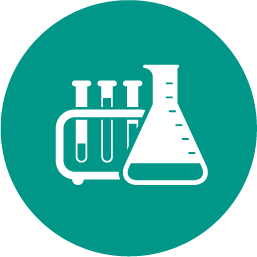
Biology, 10.06.2021 18:00 josemartinez2025
1. Which of the following applies to a viral infection?
A. Viral infections Viruses can be treated with antibiotics.
B. Viruses can only replicate with in a cell or living tissue
C. Viruses are larger than bacteria.
D. Viruses are made of cells.
2. Fill in the blank
inject DNA or RNA into the nucleus of a cell to reproduce.
It is often argued that viruses are not living. Why?
A. Viruses reproduce.
B. Viruses are not made of cells.
C. Viruses contain genetic material.
D. Viruses are made of RNA or DNA.
3. Viruses are not living because
A. They are made of cells
B. They cannot synthesize DNA or RNA
C. They cannot reproduce on their own
D. They do not contain a cell membrane
4. Viruses are different from bacteria in that
A. they can remain dormant on non-living surfaces
B. they can be found just about anywhere
C. they can infect just about every form of life
5. Which of the following?
Viral infections .
A. can be treated with antibiotics
B. often can't be treated
C. can be prevented with immunization
D. can be contracted only from direct contact with someone infected
6. Edward Jenner discovered a vaccination against by infecting a boy with .
A. measles; smallpox
B. cowpox; smallpox
C. polio; cowpox
D. smallpox; cowpox
7. How does the flu vaccination work?
A. The flu vaccine works by making you sick with the flu so that you won’t get the flu later.
B. The flu vaccine is a dose of antibodies that fight the flu virus.
C. The flu vaccine is injected under the skin in an inactive form and the immune system responds with antibodies to the flu protecting you from future exposure to the flu.
D. The flu vaccine is injected under the skin and the endocrine system responds by sending hormones to fight the virus.
8. Artificially stimulating antibodies to a disease is a(an).
A. immunization
B. vaccination
C. variolation
D. virus
9. At what ages do health official recommend following an immunization schedule?
A. over 65 years
B. 8-18 years
C. birth - 18 years
D. birth - 75 years
Which of the following:
10. A virus is
A. A free living cell
B. Always parasitic
C. Contains DNA or RNA
D. Cannot reproduce on their own

Answers: 2


Another question on Biology

Biology, 21.06.2019 15:30
What is the chance of two parents with blood types ab and o producing an offspring with blood type o a.0% b.25% c.75% d.50%
Answers: 1

Biology, 21.06.2019 20:40
Question 1(multiple choice worth 3 points) (06.04 lc) which of the following is true about repetition in an experiment? it involves setting up of a hypothesis. it involves multiple trials. it involves data analysis. it involves peer review. question 2(multiple choice worth 3 points) (06.03 mc) the trait for flower color in a plant has red and white alleles. the red color is the dominant trait. what is the phenotypic ratio for a cross between plants with red (rr) flowers and white (rr) flowers? 4 red : 0 white 3 red : 1 white 2 red : 2 white 0 red : 4 white question 3(multiple choice worth 3 points) (06.01 mc) the following table describes some biotechnological processes. biotechnological processes process description 1 producing offspring that have identical dna as one parent 2 crossing a high-yielding fruit variety with a high-vitamin variety which biotechnological processes are described in the table? both processes describe cloning. both processes describe genetic engineering. process 1 describes cloning and process 2 describes artificial selection. process 1 describes artificial selection and process 2 describes cloning. question 4(multiple choice worth 3 points) (05.04 mc) which of the following adaptations best polar bears walk on snow? furry feet slippery feet small feet white-colored feet question 5(multiple choice worth 3 points) (06.01 hc) a team of scientists altered the dna of e. coli bacteria. the bacteria thus developed had the ability to generate insulin exactly identical to the human insulin molecule. what could be the likely impact of this biotechnology on the individual and the society? the medical costs for insulin-dependent patients would rise. large-scale insulin could be produced in relatively lesser time. the price of insulin available from sources other than bacteria may fall. the patients who take insulin may become infected with e. coli bacteria. question 6(multiple choice worth 3 points) (06.03 lc) which of the following is used to represent a recessive trait in a punnett square? an uppercase letter a lowercase letter a shaded square a shaded circle question 7(multiple choice worth 3 points) (06.03 mc) cystic fibrosis is a recessive gene disorder. the pedigree chart for a family known to have cystic fibrosis is shown below. a half shaded circle is shown connected by a straight line to an unshaded square. underneath the half shaded circle are the letters aa which represent the genotype for the first parent. underneath the second parent the letters, aa, appear representing the genotype for the other parent. below this is another row of circles and squares. this 2nd row represents the offspring. starting from the left a half shaded circle is shown connected to an unshaded square, followed by an unshaded square, and then an unshaded circle. each of the circles and squares, offspring, are connected by a horizontal straight line that connects to the parent group above. the genotype is written under each of the offspring in order from left to right; aa, aa, aa, aa. what percentage of the offspring have observable disease? 0% 25% 50% 75% question 8(multiple choice worth 3 points) (06.03 lc) which of the following is an example of a homozygous recessive allele? rr rr rr rw question 9(multiple choice worth 3 points) (06.03 mc) the pod color in pea plant can be yellow or green. a pea plant with yellow pods (yy) is crossbred with another pea plant with green pods (yy). what is the probability of offspring with green pods? 0% 25% 50% 75% question 10(multiple choice worth 3 points) (06.02 mc) a pea plant has white flowers. it has a genotype pp. which of the following about the gene of flower color in the pea plant is true? the allele for white flowers is dominant in the pea plant. the allele for white flowers is recessive in the pea plant. the plant received both dominant alleles from both the parents. the plant received a dominant and a recessive allele from each parent. the characteristics of certain cell divisions are described in the following table. cell division characteristics characteristic description 1 forms diploid cells 2 creates sex cells, or gametes which type(s) of cell division do the two characteristics represent? both characteristics represent meiosis. both characteristics represent mitosis. characteristic 1 represents meiosis and characteristic 2 represents mitosis. characteristic 1 represents mitosis and characteristic 2 represents meiosis.
Answers: 1

Biology, 22.06.2019 01:30
Hedgerows have created a new ecosystem within britain’s a. farms b. cities c. forests d. industrial areas
Answers: 1

You know the right answer?
1. Which of the following applies to a viral infection?
A. Viral infections Viruses can...
A. Viral infections Viruses can...
Questions

Mathematics, 28.10.2020 21:20

Mathematics, 28.10.2020 21:20


Mathematics, 28.10.2020 21:20

Mathematics, 28.10.2020 21:20



Health, 28.10.2020 21:20


Engineering, 28.10.2020 21:20

Chemistry, 28.10.2020 21:20

Mathematics, 28.10.2020 21:20

Mathematics, 28.10.2020 21:20



Physics, 28.10.2020 21:20



Mathematics, 28.10.2020 21:20

Geography, 28.10.2020 21:20



